Dog training establishes a strong bond between you and your pet, fostering obedience and mutual understanding․ It involves clear communication, positive reinforcement, and consistency, leading to improved behavior, a stronger relationship, and a safer environment for everyone involved․
Key Tips for Successful Dog Training Sessions
Consistency and patience are crucial for effective dog training․ Establish a clear routine and use positive reinforcement, such as treats and praise, to encourage good behavior․ Keep training sessions short and engaging to maintain your dog’s focus․ Avoid distractions by training in a quiet, controlled environment․ Ensure your dog is well-rested and not overly hungry before sessions․ Use a leash during exercises unless specified otherwise, and minimize interactions with other dogs to prevent distractions․ Stay calm and assertive, as your dog will respond to your energy․ Downloadable guides, like the Dog Training Guide, offer structured plans to help you stay on track and achieve progress․
Preparing Your Home for Dog Training
Before starting training, ensure your home is dog-ready․ Restrict access to areas where your dog might get into trouble or cause accidents․ Use crates or pens to create a safe space for your dog when unsupervised․ Remove hazardous items like toxic substances or fragile objects․ Designate a quiet, distraction-free area for training sessions․ Keeping your dog clean and brushed is essential for effective learning․ Downloadable guides, such as the Dog Training Guide, offer practical tips for setting up your home and creating a structured environment that supports your dog’s education and well-being․
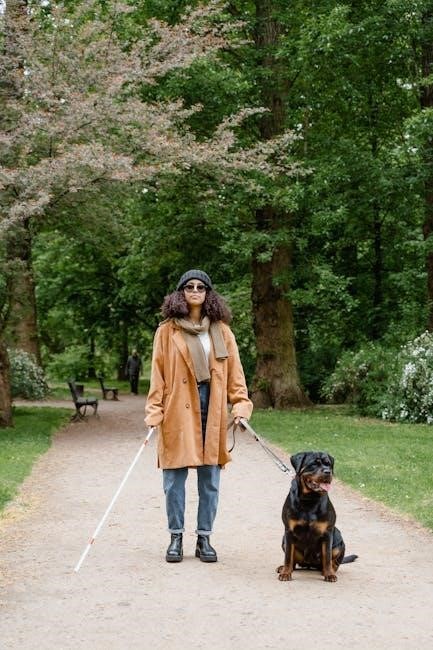
Basic Obedience Commands
Mastering basic commands like “sit,” “stay,” and “come” lays the groundwork for effective communication․ Positive reinforcement and consistency are key to successful training, as outlined in downloadable guides․
Teaching Your Dog to Sit, Stay, and Come
Teaching your dog to sit, stay, and come are foundational commands that establish clear communication and trust․ Start with “sit” by holding a treat above your dog’s head and guiding their bottom down․ Reward immediately․ For “stay,” begin with your dog in a sitting position, take a few steps back, and return to reward․ Gradually increase distance and time․ “Come” should be practiced in a controlled environment, using a positive tone and rewards․ Consistency and positive reinforcement are key․ Always start indoors to avoid distractions․ Use high-value treats and praise to encourage quick responses․ Over time, practice in varied settings to ensure reliability․ These commands build a strong bond and ensure your dog’s safety․
Leash Training: Walking Without Pulling
Leash training is essential for enjoyable walks with your dog․ Start by giving clear direction rather than pulling back․ Use positive reinforcement, such as treats and praise, when your dog walks calmly beside you․ Avoid letting your dog sniff or play with others during training․ If your dog pulls, stop walking and reward them for returning to your side; Consistency is key․ Short, focused sessions help build good habits․ Over time, your dog will learn to walk without pulling, making outdoor adventures more enjoyable for both of you․ Patience and the right techniques ensure a well-behaved companion․
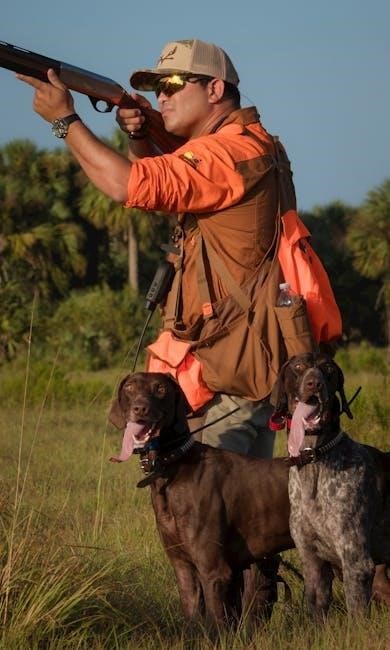
Advanced Training Techniques
Advanced training techniques enhance your dog’s skills through agility, mental stimulation, and clear communication․ These methods build confidence and refine behavior, creating a more responsive and intelligent companion․
Agility Training for Dogs
Agility Training for Dogs
Agility training is an exciting way to challenge your dog physically and mentally․ It involves navigating obstacle courses with tunnels, jumps, weave poles, and contact equipment like A-frames․ This activity improves coordination, speed, and focus while strengthening the bond between you and your dog․ Start with basic obstacles and gradually increase difficulty as your dog gains confidence․ Positive reinforcement techniques, such as treats and praise, are key to successful training․ Agility training not only enhances physical fitness but also provides mental stimulation, making it a fun and rewarding experience for both you and your pet․
Teaching Your Dog Tricks
Teaching your dog tricks is a fun and engaging way to challenge their mind and strengthen your bond․ Start with simple tricks like “shake hands” or “roll over,” using positive reinforcement such as treats and praise․ Capture simple behaviors by rewarding your dog when they perform the desired action․ Gradually build complexity as your dog gains confidence․ Tricks not only provide mental stimulation but also enhance your dog’s creativity, making them a free thinker․ Consistency and patience are key to successful trick training, turning it into a rewarding experience for both you and your pet․
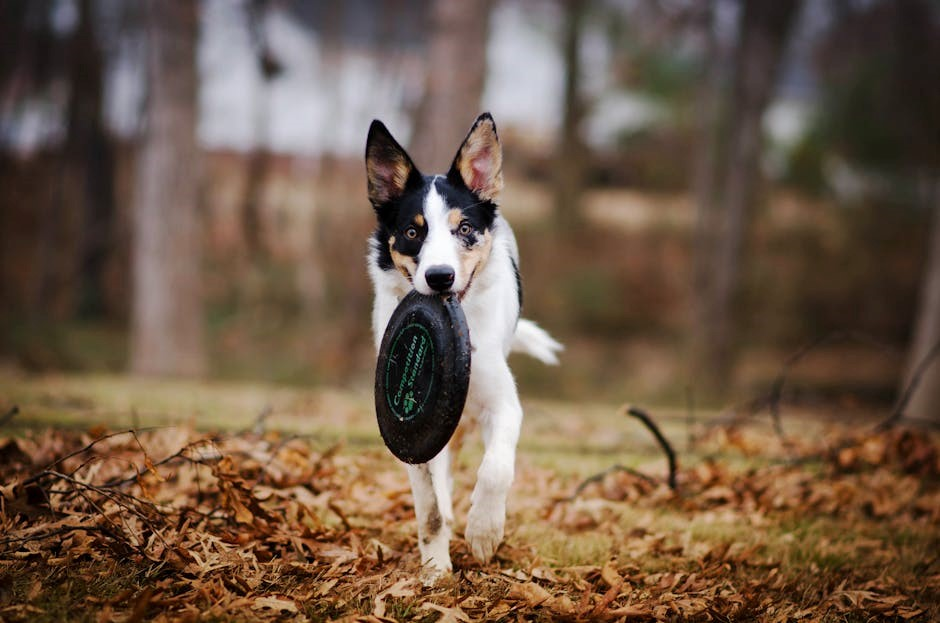
Specialized Training
Specialized training empowers dogs for specific roles, enhancing their abilities and your relationship․ From service dogs assisting disabilities to puppy-specific training for early life skills, it transforms pets into valued partners, fostering confidence and purpose through tailored guidance and care․
Service Dog Training
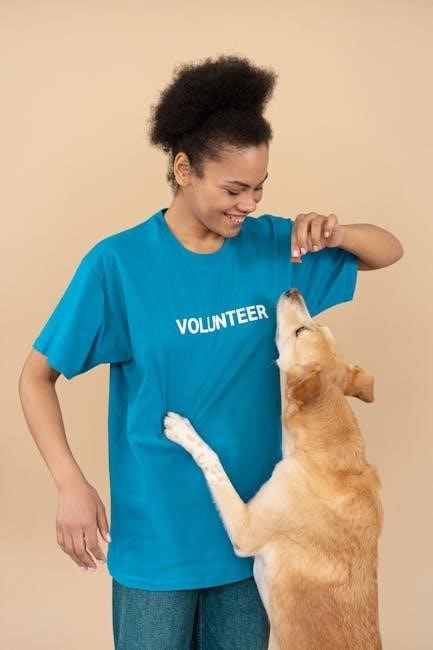
Service dog training prepares dogs to assist individuals with disabilities, performing specific tasks to mitigate challenges․ Dogs must learn at least three tasks to aid their handlers, such as opening doors or providing support for mobility issues․ Training focuses on obedience, public access etiquette, and responding to commands in distracting environments․ Positive reinforcement is key, ensuring reliability and calm behavior in stressful situations․ Resources like free PDF guides and expert recommendations provide structured approaches for trainers․ This specialized training not only empowers dogs but also enhances the independence and quality of life for those they serve․
Puppy-Specific Training
Puppy-specific training focuses on socialization, housebreaking, and foundational skills․ Start with short sessions to avoid overwhelming your puppy, using positive reinforcement like treats and praise․ Establish routines for feeding, play, and sleep to promote consistency․ Restrict free access to your home to prevent accidents and unwanted behaviors․ Crate training can help with potty training and reduce separation anxiety․ Introduce basic commands like “sit” and “stay” gradually․ Downloadable PDF guides offer structured plans tailored to puppies’ developmental needs, ensuring a smooth transition into well-behaved adult dogs․ Early training sets the stage for a lifelong bond and proper behavior․
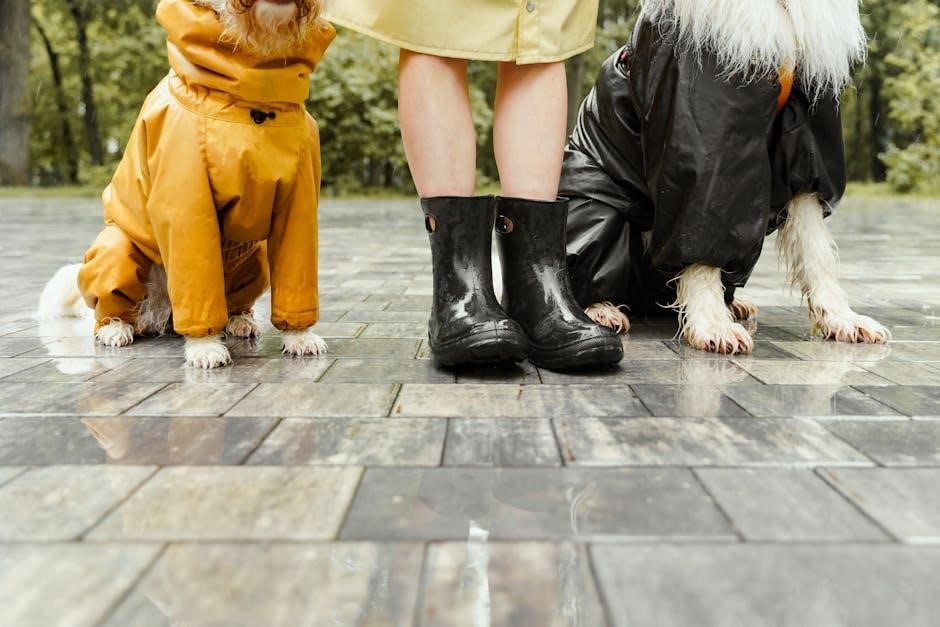
Health and Safety
Ensure your dog’s health and safety by providing proper nutrition, hydration, and exercise․ Monitor training environments to prevent injuries, and avoid overexertion, especially in extreme weather conditions․
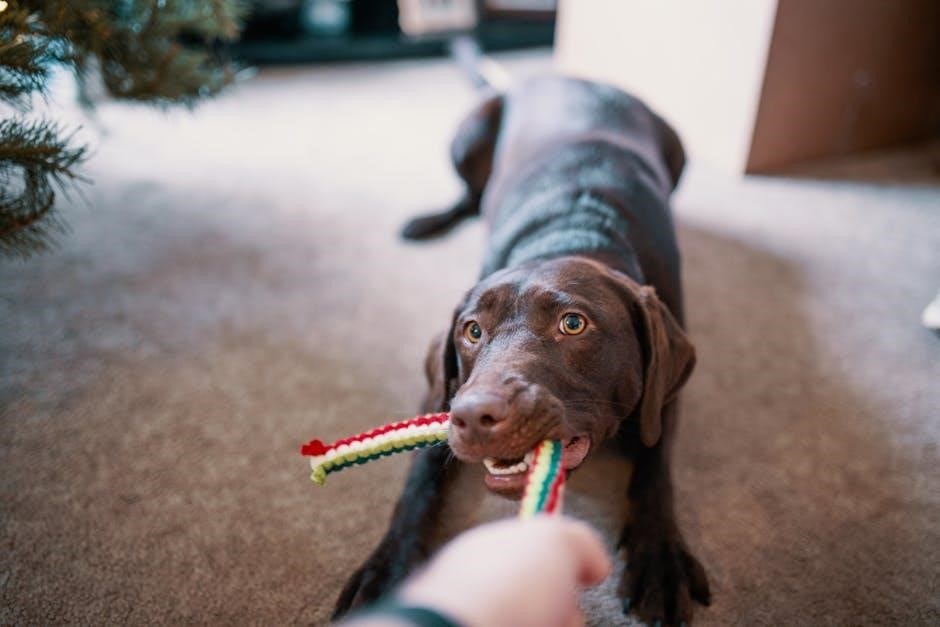
The Importance of Nutrition in Training
Nutrition plays a crucial role in dog training, as it directly impacts energy levels, focus, and overall health․ A balanced diet ensures your dog is physically and mentally prepared for sessions․ Avoid feeding your dog for at least four hours before training to prevent digestive discomfort․ Provide fresh water at all times to keep them hydrated․ A well-nourished dog is more attentive and responsive, leading to better training outcomes․ Additionally, healthy treats can serve as effective rewards, reinforcing positive behavior during exercises․
Keeping Your Dog Safe During Training
Ensuring your dog’s safety during training is essential for a positive experience․ Always keep your dog on-leash unless an exercise specifically requires it․ Avoid distractions like other dogs or prolonged training sessions․ Ensure your dog is clean, brushed, and free of fleas before starting․ Provide fresh water and regular breaks to prevent exhaustion․ Use positive reinforcement techniques to maintain your dog’s focus and reduce stress․ A safe environment fosters trust and effective learning, making training sessions enjoyable and productive for both you and your pet․
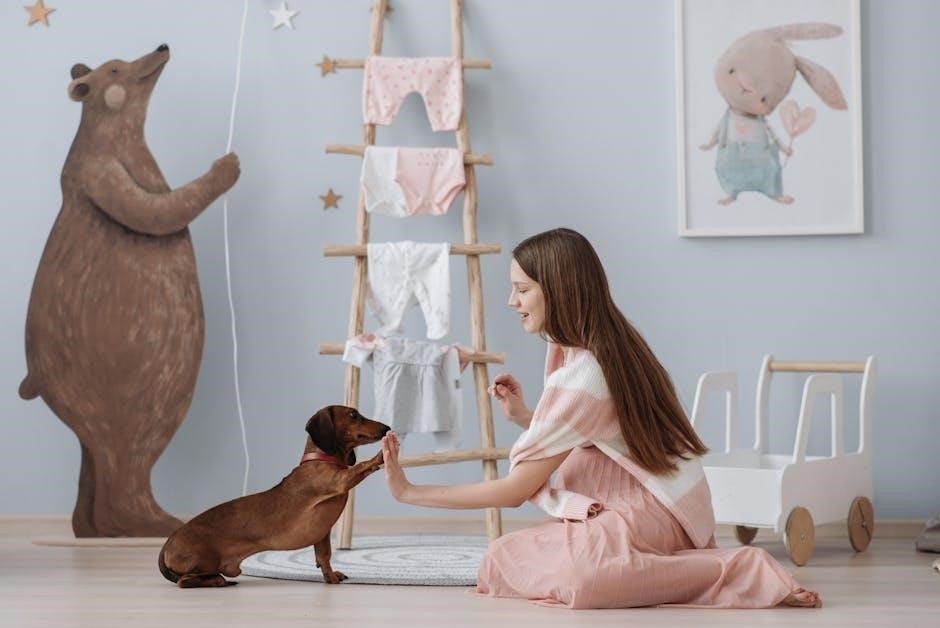
Downloadable Resources
Downloadable resources, such as free PDF guides and printable templates, are available to support your dog training journey․ These materials can be customized to meet your dog’s specific needs and help track progress effectively․
Free PDF Guides for Dog Owners
Free PDF guides provide comprehensive insights into dog training, covering topics from basic obedience to advanced techniques․ These downloadable resources are designed to help owners customize training plans, track progress, and address specific behavioral needs․ Popular guides include puppy-specific training manuals, leash-walking tips, and nutrition advice․ Many resources are tailored for different breeds or life stages, ensuring relevance for every dog․ Expert-authored guides often include step-by-step instructions and printable templates for consistency․ Whether you’re a new owner or an experienced trainer, these free PDFs offer invaluable tools to enhance your dog’s learning journey and strengthen your bond․
Tracking Progress with Printable Templates
Printable templates are essential for monitoring your dog’s training journey, helping you stay organized and motivated․ These tools allow you to log daily exercises, track milestones, and identify areas needing improvement․ Templates often include progress charts, habit trackers, and reward systems to celebrate successes․ Many guides offer customizable sheets to suit your dog’s specific needs, ensuring a tailored approach to their development․ By maintaining detailed records, you can adjust training strategies and measure growth effectively, fostering a structured and rewarding learning process for both you and your dog․
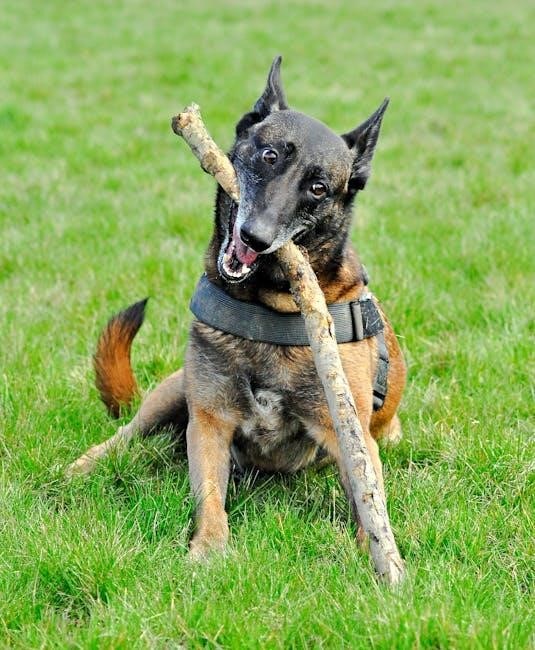
Expert Recommendations
Expert-recommended resources include Zak George’s tailored training methods and Brandon McMillan’s 7-day program․ Free PDF guides offer structured approaches, ensuring effective and personalized dog training experiences․
Top Books on Dog Training
Top-rated books on dog training include Zak George’s guide, offering fresh, tailored methods for individual dogs․ Brandon McMillan’s 7-day program promises quick results․ Other notable titles include The Owners Guide from Puppy To Old Age, covering care, grooming, and training․ A Practical Guide to Resource Guarding in Dogs addresses behavioral issues․ These books provide comprehensive insights, from basic obedience to advanced techniques․ They emphasize positive reinforcement and structured approaches․ Download free PDF guides to access expert advice and customizable training plans, ensuring a well-rounded education for both dogs and owners․
Online Courses and Tutorials
Explore expert-led online courses and tutorials designed to enhance your dog training skills․ Zak George’s platform offers dynamic, tailored methods, while Brandon McMillan’s program promises rapid results․ Structured video tutorials guide you through basic obedience to advanced techniques․ Many courses emphasize positive reinforcement and include downloadable resources․ Track progress with customizable templates and adapt training to your dog’s unique needs․ These online tools provide flexibility and expert advice, ensuring effective learning for both you and your pet․ Start your journey with these accessible, engaging resources and elevate your training experience․
Effective dog training builds a strong bond and fosters mutual understanding․ Consistency, positive reinforcement, and patience lead to improved behavior and a safer, happier environment for both pet and owner․
Final Tips for Effective Dog Training
Consistency and patience are key to successful dog training․ Set realistic goals, celebrate small victories, and maintain a positive attitude․ Use positive reinforcement techniques, such as treats and praise, to encourage good behavior․ Avoid punishment, as it can create fear and mistrust․ Keep training sessions short and engaging to hold your dog’s attention․ Stay calm and assertive, ensuring clear communication․ Be prepared to adapt your methods based on your dog’s unique needs and personality․ With dedication and the right approach, you can help your dog become well-behaved, loyal, and a joyful companion․
